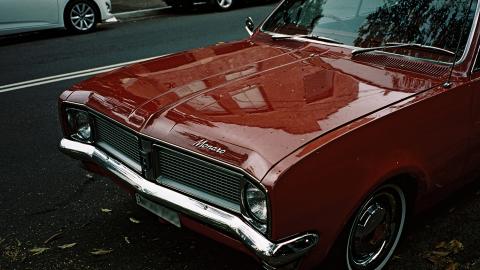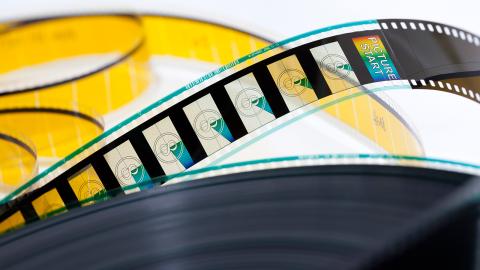
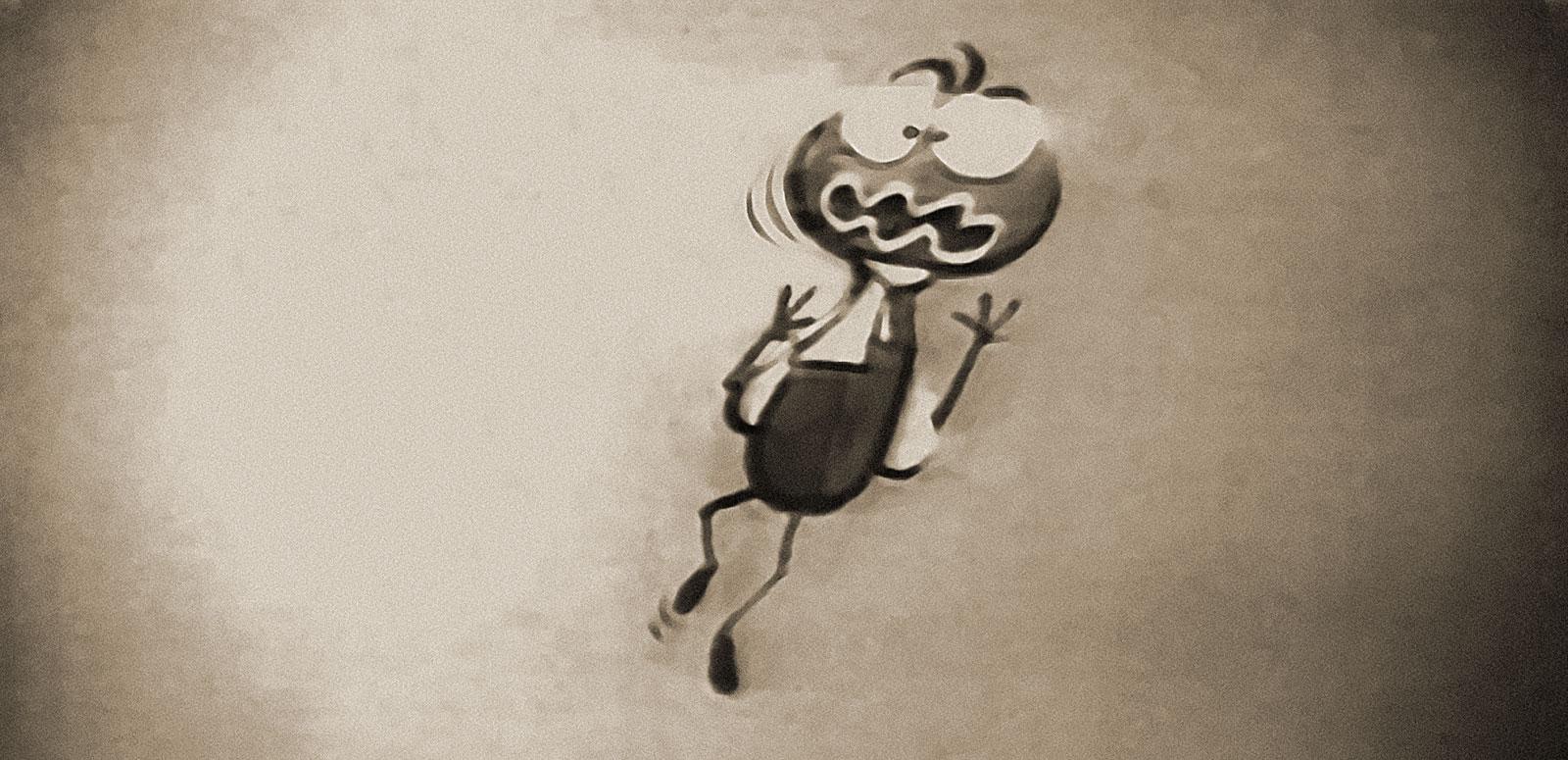
Louie the Fly
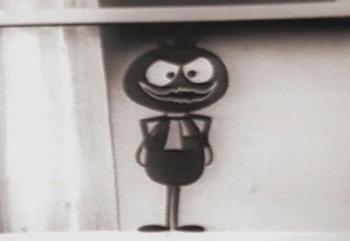
Since first appearing on TV in 1957, Louie the Fly has become one of the most iconic characters in Australian advertising.
The cartoon insect has been flying and dying to promote pest control brand Mortein for 60 years and was recently honoured for his impact on Australian culture, with the titular jingle ‘Louie the Fly’ being added to the NFSA's Sounds of Australia registry. But did you know that Louie had been flying around for about five years, before the jingle was first recorded?
Louie the gangster
Although legend has attributed the concept of Louie to author Bryce Courtenay, crediting Mr Courtenay alone overlooks the important contribution of other key players.
Following the jingle’s induction into Sounds of Australia, we spoke with the family members of three people crucial to Louie’s long history: James Joseph White, the composer; Neil Williams, the singer of the original 1962 jingle; and Ross Higgins, the actor behind Louie’s speaking voice who would also go on to record many versions of the song himself.
The first Louie the Fly commercial aired in 1957, only a year after television’s official launch in Australia. As the story goes, Courtenay came up with the concept of Louie for the McCann-Erickson advertising agency, while the animation was drawn by the company’s art director Geoff Pike. At the beginning, Louie had a very peculiar speaking voice, but no jingle.
Louie’s characteristic way of speaking was the brainchild of actor Ross Higgins. Born in 1931 and best known for starring in Kingswood Country, Higgins was a prolific performer – working as a singer, actor, presenter, comedian and voice actor over his many decades in the entertainment industry.
His son Grant shares how the distinctive voice was decided upon:
'In 1957, Bryce asked Ross what kind of voice would fit. Ross suggested that Louie should sound like a Chicago gangster, in a sort of Edward G. Robinson way, but more guttural. The original commercial was a spoken character voice only.'
'Louie the Fly' Mortein Jingle, 1962. NFSA title: 281802
The iconic jingle, which immortalised Louie in the mind of generations of Australians, was recorded by Neil Williams five years later in 1962.
'In those analogue days, a music jingle involved big expense', explains Grant Higgins, who works in advertising himself. 'A composer, session musicians, studio time - all expanding the budget. So they needed to know it was successful before they took that plunge.'
The composer and the singer
The man behind the music and lyrics for ‘Louie the Fly’ was James Joseph White (or ‘Jimmy’ to his colleagues). Born in 1922, Jimmy worked as a pianist and composer after serving in the Second World War. He wrote numerous popular jingles, including ‘Mr Sheen’ and, of course, ‘Louie the Fly.’
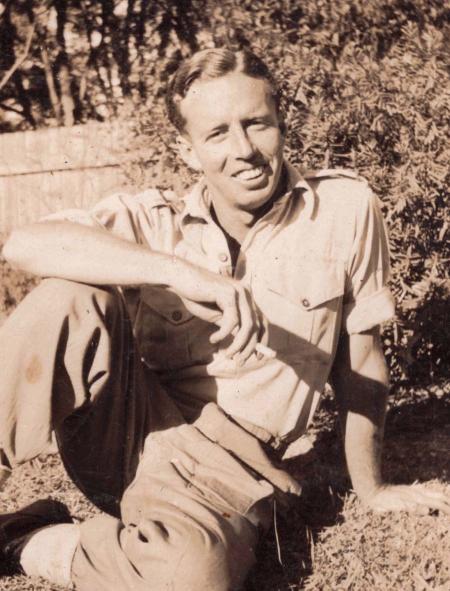
'It was the only composition that he copyrighted', says his niece, Lesley Rochaix. Lesley, along with other family members, retains copyright. 'He must have known how popular it would turn out to be.'
Louie’s original singing voice was Neil Williams. Born in 1929, Williams was already a popular singer when the time came to record the commercial. It was he who was asked to sing the part of Louie for the jingle, while Higgins and two other singers, Jimmy Parkinson and Ted Hamilton, provided backing vocals.
'Dad often forgot which commercial he sang in until it was aired on the TV', says his daughter, Carla Dyson. 'He commented to Mum after this session that he had sung about many products, but this was the first time he had been asked to be a fly. He laughed it off.'
The jingle was an instant success. When the time came to re-record it for a new campaign, it was Ross Higgins who took on singing duties in addition to voice acting.
'Bryce Courtenay instructed the audio engineers and his agency staff to "leave it to Ross" as to how it was done', says Grant. 'From that point, Ross was given free rein over how Louie evolved from a performance point of view.'
King Louie
This free rein lasted for more than 50 years, with Ross voicing Louie until 2011.
'In his final years, the recording sessions became something of an event, and agency staff and others in the industry would ask to come along and watch', recalls Grant.
For the families of Ross Higgins, Neil Williams and James Joseph White, Louie is one part of their relatives’ long and illustrious careers in showbiz.
Carla says, 'My brother, sister and myself were often referred to as the children of Neil Williams, the singing celebrity. We were proud of this.'
'What Ross did seemed normal to me growing up, because I knew nothing else', adds Grant. 'Working in television as a writer, I was lucky to write scripts and shows in which Ross performed.'
Mortein ads still feature the unmistakeable tune of the original jingle. And while everyone’s favourite gangster fly shows no sign of disappearing (despite Mortein’s 2011 PR campaign around killing him off), the fact that the jingle is now part of Sounds of Australia means it will live on at the NFSA for future generations to enjoy.
'I don’t know that Jim ever dreamed that Louie the Fly would become an Australian musical icon!', says Lesley Rochaix of her uncle’s legacy. 'He was very fond of this jingle and rightfully proud of it.'
The National Film and Sound Archive of Australia acknowledges Australia’s Aboriginal and Torres Strait Islander peoples as the Traditional Custodians of the land on which we work and live and gives respect to their Elders both past and present.
